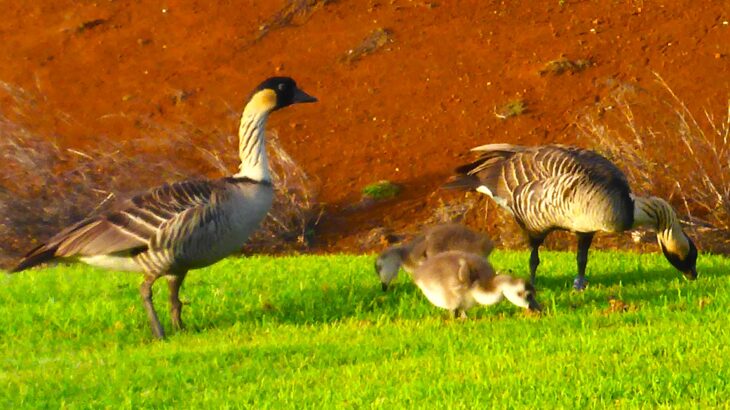It’s the annual Audubon Christmas Bird Count. We meet at sunrise at Shipwreck’s Beach parking lot with Adrian Burke, an ARC Seabird Technician (Archipelago Research & Conservation). He’s from the Big Apple with a BS in biology and two-and-a-half-years experience on Kauai.
Jenn Rothe, Field Crew Lead with ARC who we did the Christmas Bird Count with last year, calls Adrian “one of the best birders on island.”
Jenn runs the CBC independently from ARC. “The two are not really affiliated,” says Jenn. “While many ARC staff members have served as volunteers since I resurrected the Līhu’e count circle in 2020, this CBC is a side project that I spearhead in my free time.”
Meanwhile, Adrian’s dry sense of humour is at work. “Yes we have birds in NYC…LOTS of ’em.”
Today, he’s using e-Bird to store our Audubon Christmas Bird Count observations. Truth is, they’re mostly his. The longer we bird with Adrian, the more we become aware. It’s as if our senses are expanding.
The trail starts in a shaded underbrush of ironwoods. The roar of the surf is on our right. We warm in the gentle climb to the bluff, where photographer-tourists gather to greet the dawn. The light is brightening, even as clouds keep us cool in a heavy mist. 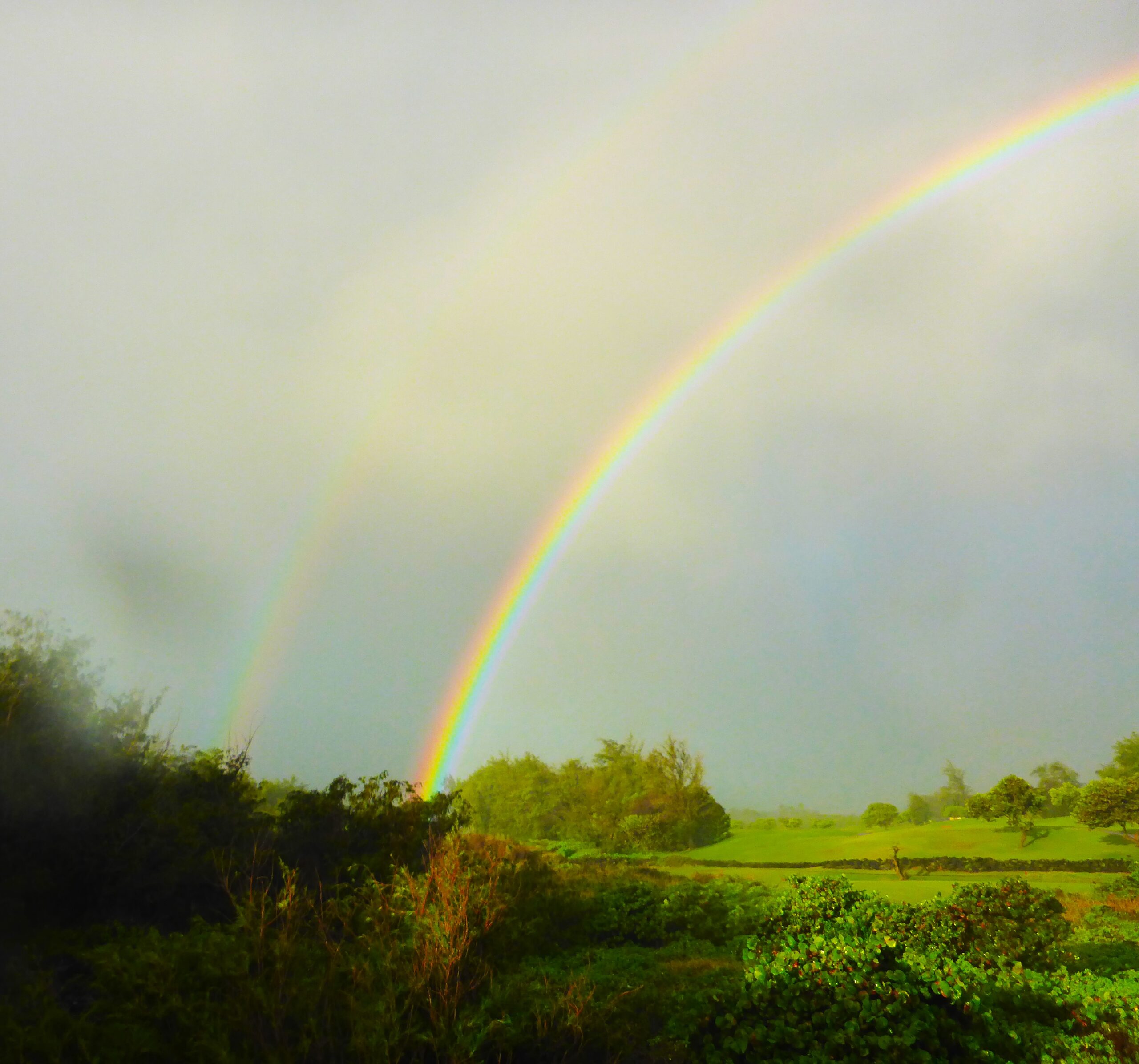
Birds chirp ‘good mornings’. 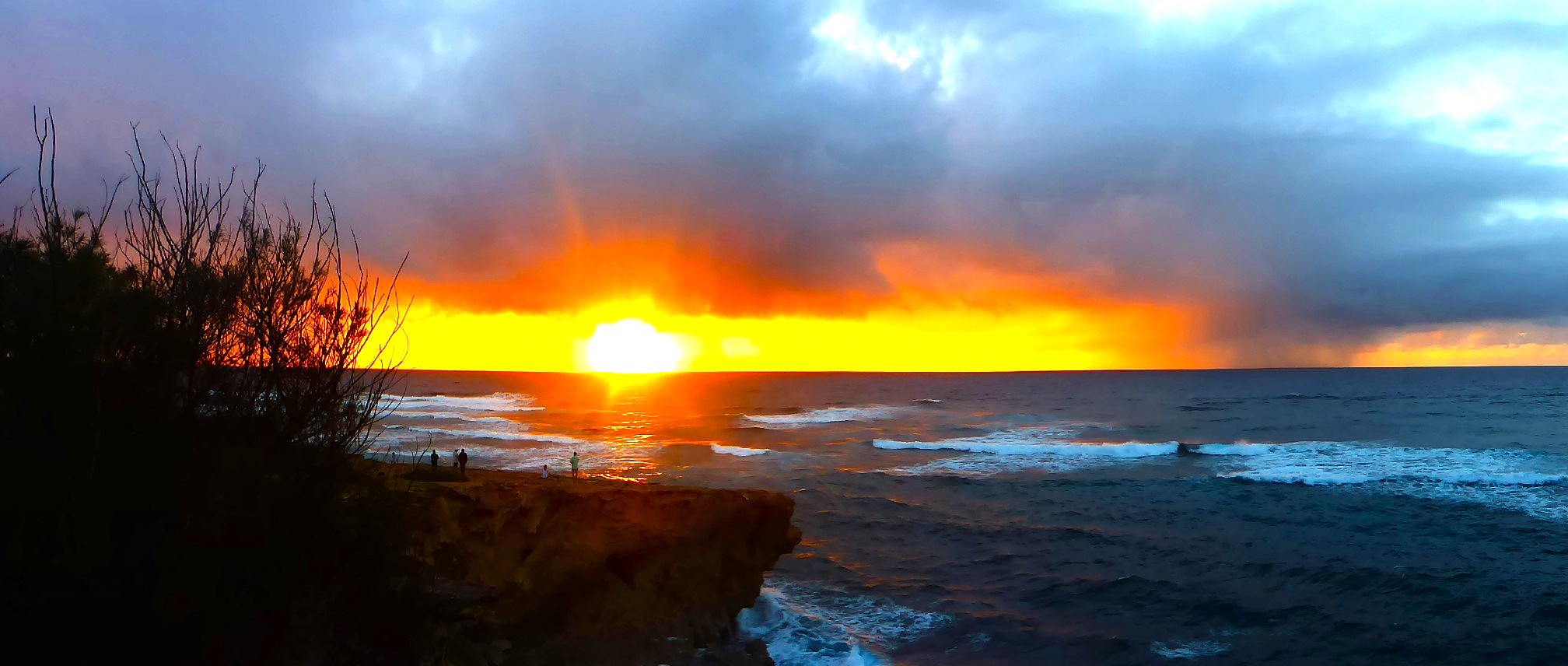
Adrian identifies sound to species. It’s audible identification which is something we, who come here annually for the Audubon Christmas Bird Count, find challenging…the dry rattle of the Hwamei, the twitter of the Warbling White-eye, the lower warble of a House Finch. Our ears open just as the light allows more sightings.
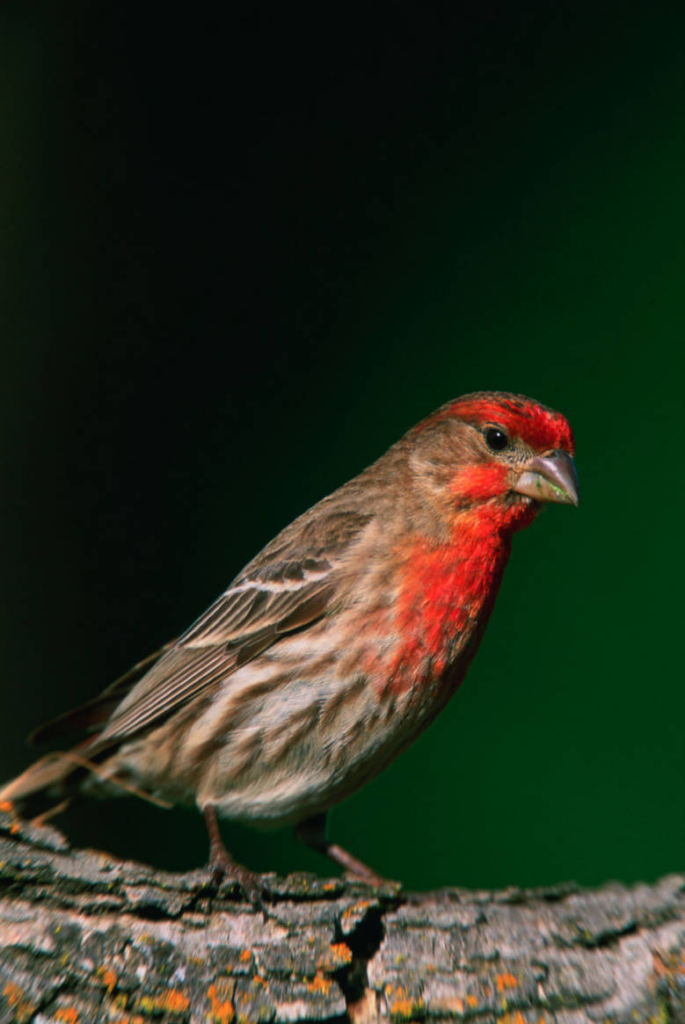
A House Finch is a percher or passerine. He’s got three toes forward and one back (like our thumb) to lock or grip onto his perches. (USFWS photo by Gary Kramer)
“One Chestnut-breasted Munia over there,” says Adrian.
“Five Red-crested Cardinals…and a Saffron Finch.”
Making an appearance are two of the most gifted songsters in the Hawaiian islands: the Northern Mockingbird and the White-rumped Shama. We see them and hope to soon hear their melodious songs.
Adrian picks out an overhead flyer: a White-tailed Tropicbird (koa’e kea in Hawaiian). I spot a Brown Booby. Along the red-rock sea cliff, Rock Doves are nesting. It’s nice to see pigeons in their natural habitat. We hear the ‘cooing’ of Spotted and Zebra Doves like a saxophone section tuning up: soprano, alto and baritone…all in their distinctive tenors.
We emerge from the ironwoods (very dense hardwood) and onto the Hyatt Golf Course Path where a full rainbow is arcing.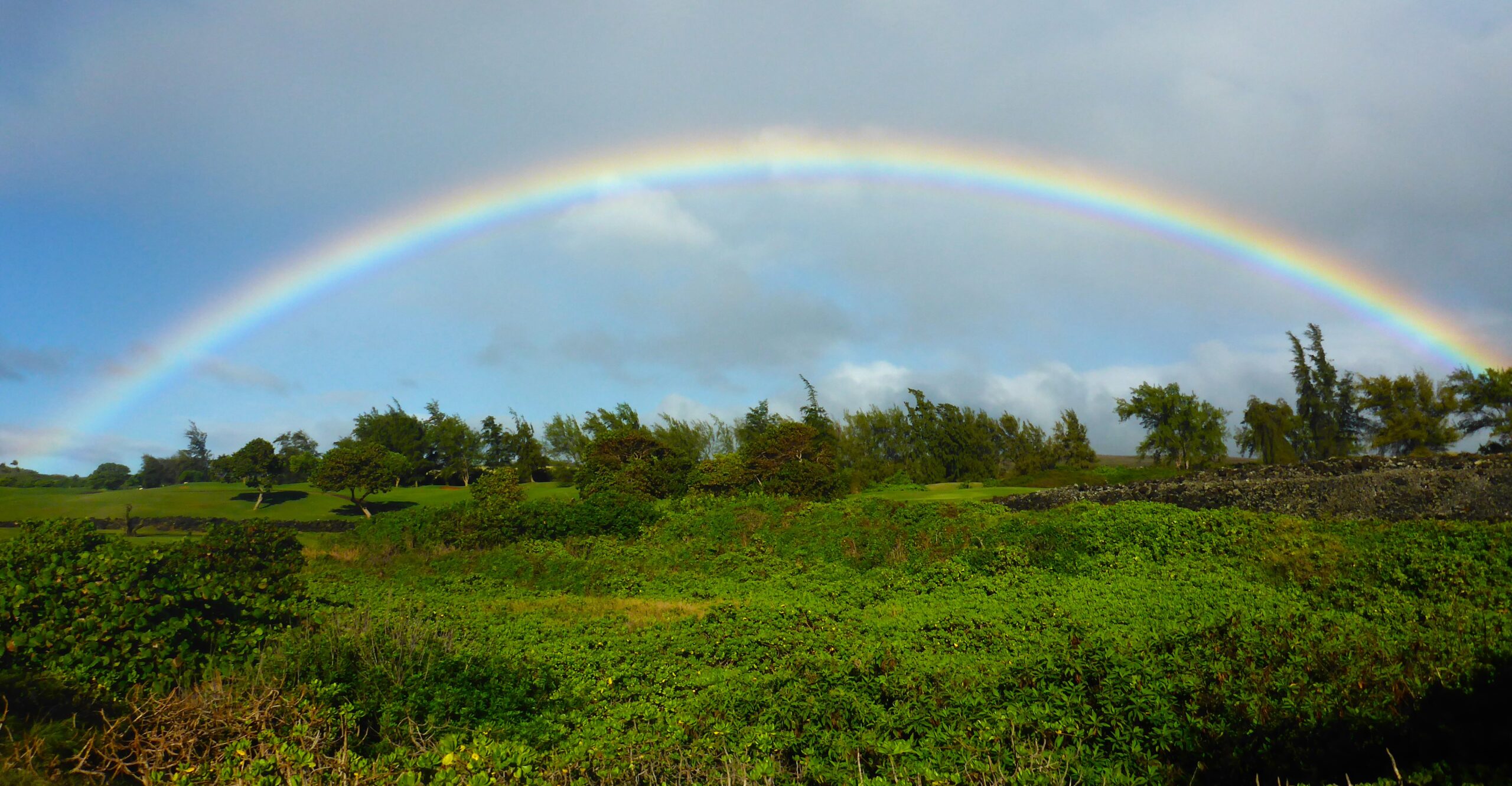 We’ve stumbled upon a pot of gold. Over the course of the next hour, we spot over 35 Hawaiian Geese called Nene, pronounced ‘neh, neh’ (some with goslings in tow)…and an uncommon visitor.
We’ve stumbled upon a pot of gold. Over the course of the next hour, we spot over 35 Hawaiian Geese called Nene, pronounced ‘neh, neh’ (some with goslings in tow)…and an uncommon visitor.
Adrian says, “Watch out for the Cackling Goose; they sometimes hang out with Nene.”
We ask what they look like, and he makes it easy for us. “A smaller version of the Canada Goose with a stubbier beak.”
Adrian’s got one in his spotting scope. We marvel at the similarity. This one’s not cackling. He may be having a quiet chuckle as he tucks his shorter neck and sloping forehead under his wing for a nap with the Nenes.
Being with an expert birder (and his/her spotting scope) far surpasses our binocular-vision. Our enjoyment of the popular passtime is enhanced. Adrian points out the burrows (and leftover feathers) of Shearwater (recently-vacated) and the breeding plumage of a Cattle Egret perched in a tree with its pink-orange legs (normally yellow) with rusty tufts on crown, breast and back. He takes note of tag numbers on the Nene to specify his count, and notices when they are banded or unbanded.
Adrian reminds us how the Gallinule or Hawaiian Moorhen is thought to have brought fire from the gods to the Hawaiian people.
Credit for the below photo: Keenan Adams, USFWS. Other photo credits: Joan Boxall (unless stipulated)
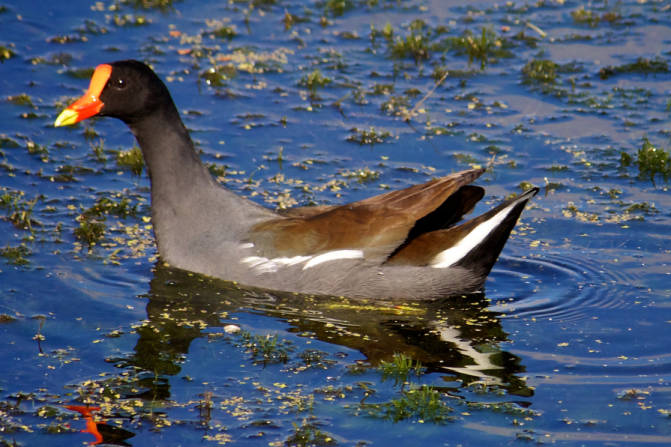
We recommend doing an Audubon CBC whenever you get the chance. The Audubon Christmas Bird Count is the longest-running community bird project in the United States and will fire up your bird-watching senses! It takes place across North America: in Canada, and in several Caribbean and Latin American countries as well.
We head home after five hours in the field with Adrian. We plan on imitating the Cackling Goose’s naptime while Adrian, Jenn and CBC volunteers keep counting…right up until the sunset roost of 7000 Rose-ringed Parakeets*.
*The RRPA is an invasive species and according to the Hawaii Invasive Species Council, these long-tailed interlopers damage agriculture (up to 10%), compete with other birds for food and space, and are a concern to human health and safety, widespread on Oahu and Kauai.
(PS=post snooze)
I spend the afternoon discussing James Patterson and the late Michael Crichton’s, book ‘Eruption’, a page-turner along the likes of ‘Jurassic Park’.
Unlike at Jurassic Park, we were (CBC) counting on the foreflyers of maniraptorian dinosaurs (birds) this day on Kauai’s South Shore.
